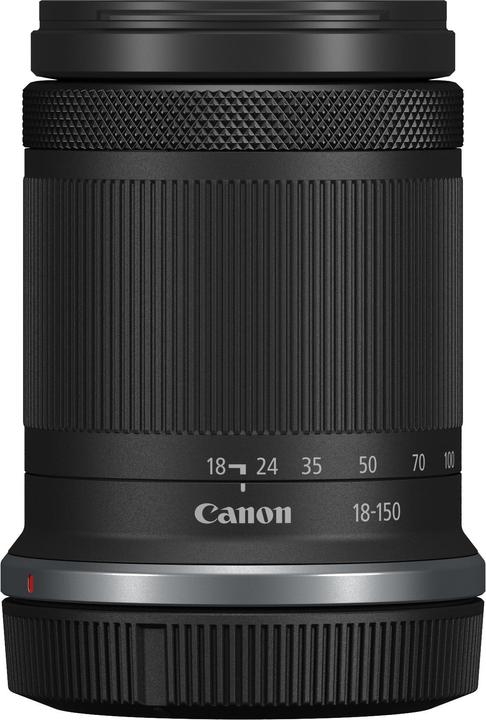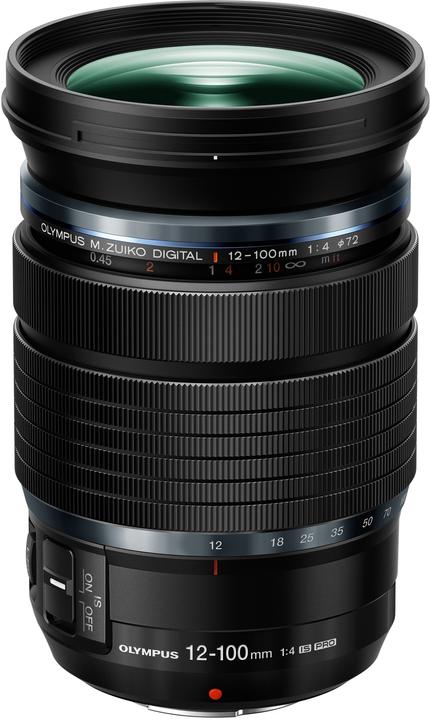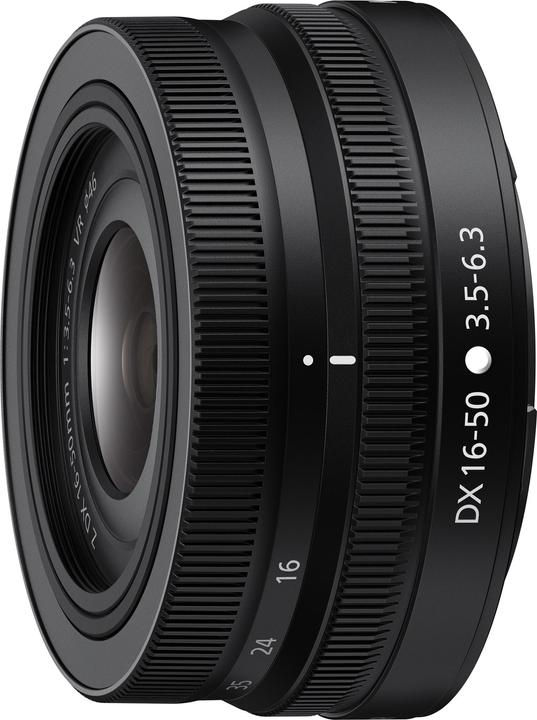

How much camera equipment should you take on holiday?
No cumbersome weight and good image quality in every situation; these are the characteristics of the perfect travel photo equipment. However, since there’s no such thing, you’ll have to figure out what your own photo must-haves are.
When travelling, you want to take as little luggage with you as possible. At the same time, you want to be ideally equipped for any situation imaginable. This makes people come to differing conclusions. For some, a small carry-on is enough. Others, however, lug along three suitcases, vigorously protesting that they definitely need it all.
It’s a dilemma that not only applies to clothes, but to camera equipment too. In this article, I’ll go over the pros and cons of different approaches. I’ve written the article in such a way that you’ll probably understand it even if you haven’t done a lot of photography before.
So as not to make things even more complicated than they already are, I haven’t broached the issue of video. Although you can create clips on any equipment, video equipment has its own set of unique requirements.
Minimalist: smartphone only
As a photo freak, taking just my smartphone on my travels makes me feel naked. For occasional snappers, however, this is exactly the right approach. Since you’ll be taking your smartphone with you anyway, you won’t have a single gramme of extra luggage. Always within reach and easy to operate, it’s clear why most photos are taken with smartphones these days.
The image quality you get with a high-end device has become astoundingly good – better than most compact cameras. You also get a larger screen for reviewing your photos than you do on a camera. Another plus point is the ability to share photos faster and more easily.
Most state-of-the-art smartphones have an ultra-wide-angle camera in addition to the main one. I don’t usually need the ultra-wide-angle in everyday life, but I do when I’m on holiday. It allows me to snap tall buildings without having to tilt the camera up, preventing slanted lines. The ultra-wide angle is also great for scenery shots. On this wild La Palma beach, for example, I only managed to get the bay and its cloud twin into the frame by using my smartphone. If I’d used a camera, I would’ve needed to bring an ultra-wide-angle lens.

Source: David Lee
Without a «real» camera, however, you’re limited. If you want to zoom in using a smartphone camera, you’ll only be able to do so with considerable losses in quality. You won’t be able to see much in sunlight, even with the best of screens. Manual photography with a self-selected aperture and exposure time is only possible to a certain extent. When you’re on your travels, you also run the risk of putting all your eggs in one basket: everything depends on your smartphone. If it gets lost or even if the battery dies, you’re screwed.
Lightweight: a compact camera
Compact cameras are great for travel. The problem is, little has been invested in developing new models for at least the last ten years. That’s why photos taken on cutting-edge smartphones are usually better these days.
Here’s a typical example. Photographed against the sun, the reflective sea is extremely bright compared to the landscape. The smartphone – in my case, an iPhone 12 mini – deals with these extreme brightness differences using intensive software computing. With a compact camera, you don’t stand a chance; you end up with irreparable overexposure.

Source: David Lee

Source: David Lee
What I do have on a compact camera is better manual control. When photographing, say, a waterfall, I can choose between making individual water drops or the flowing movement of the falls visible. Alternatively, I can close the aperture and create starburst effects. This shot, taken at the same time and place as the sunset above, wouldn’t be possible with a smartphone.

Source: David Lee
The compact camera I’d recommend is the Sony RX100. It fits in your pocket, and still provides everything you need. Thanks to the viewfinder, I have a clearer view of things I’m photographing in sunny conditions. As I get older, I’ve also come to appreciate being able to adjust the dioptres on the viewfinder instead of having to rely on reading glasses.
There are different versions of the RX100. I’ve got the good old RX100 III as well as the RX100 VII. If I didn’t already have a compact camera, I’d buy something in between the two – the RX100 V A. It’s not as expensive as the VII, and has a faster lens. That being said, the zoom range is much narrower, and you have to pull out the viewfinder manually every time. On the VII, on the other hand, it automatically jumps to the end position.

Compact cameras are usually less robust than larger ones, with exceptions like the Olympus Tough TG-6 proving the rule. A weak point on the RX100 is the lens shutter, the blades of which are easy to bend, causing the whole thing to jam. This is why I wouldn’t spend over 1000 francs or euros on this sort of camera.
A travel zoom lens for an interchangeable lens camera
As the name suggests, interchangeable lens cameras are cameras that allow you to swap lenses. At the same time, they provide higher image quality than compact cameras because they have a larger sensor. When you’re travelling, it can be useful to bring an interchangeable lens camera with just one lens. That way, you can take advantage of the large sensor and still keep your gear portable.
If you only have one lens to hand, it’s practical to have a versatile one. This is exactly why travel lenses have a wide zoom range. They’re also known as universal zoom or superzoom lenses. Whether you’re standing in front of a large building or want to zoom in on a distant detail, universal zoom delivers the right shot.
The initial and final focal lengths define the largest and smallest possible image sections, and therefore the zoom range. At the same time, however, this also depends on the camera’s sensor size.
Travel zooms for 35 mm cameras usually have a focal length starting at 24 millimetres, ending somewhere between 100 and 300 millimetres. On APS-C cameras, the focal length is shorter by a factor of 1.5, on Micro Four Thirds by a factor of 2. Consequently, the typical starting focal length on APS-Cs is around 18 millimetres, and 12 millimetres on Micro Four Thirds.
These three lenses are just examples. Be sure to do your homework before you buy one and find out which lenses will fit your camera.
There are also downsides to travel zooms. They’re usually slower compared to lenses with little to no zoom. Not only does this have an impact on image composition, but you also have fewer opportunities to play around with the depth of field, which might occasionally make the background look unsettled.
On top of that, with a lowlight lens, you need to expose longer to keep the ISO sensitivity low and the image quality high. This is a bit of an issue when it comes to telephoto lenses. Make sure that strong telephoto lenses have a built-in image stabiliser. This way you can expose for longer without blurring the image.
Two zoom lenses
Instead of one lens with a wide zoom range, you can opt for two with less zoom. A typical split is 24–70 mm and 70–200 mm for full-frame cameras. On APS-C cameras, this is about 18–55 mm and 55–135 mm.
The advantage over a universal zoom is that higher apertures are possible, with f/2.8 being very common. With a double pack like this, you’ll have a versatile jack-of-all trades in your hand. The downside is that if you want your two lenses to be high speed, they’ll be large, heavy and expensive.
There are definitely lightweight and inexpensive lenses with this zoom range, especially for APS-C cameras. On the flip side, they’re not fast.
Universal zoom and prime lenses
That’s why, when I go on holiday, I go for a different variant: an all-purpose zoom lens and two fast prime lenses. If I were taking a full-frame camera, I’d pack a nifty fifty along with it. That’s a small, lightweight, inexpensive 50 mm lens with a fairly high lens speed – typically f/1.8.
These lenses also work on APS-C cameras. They’re particularly well suited to portraits because of their narrower field of view. With this in mind, I always bring an additional 35 mm lens with me – basically the nifty fifty for APS-Cs. For Micro Four Thirds, a 25 mm prime lens serves the same purpose.
Unfortunately, lenses like these either aren’t available for every system, or are only available from third-party manufacturers. In the case of the latter, you need to be careful as many of these models don’t have autofocus. This one is a prime example.
Why go for an interchangeable lens camera?
As you know by now, interchangeable lens cameras are all about, well, the lenses. These days, the cameras themselves are all good enough to capture holiday memories in decent quality. You’ll probably want to use your camera when you’re back from holiday. Only then, the thing you intend to use the camera for will determine which lens is the correct fit. Here are some recommendations for each specialist application:
If the camera is primarily for vacations, it’s got to have minimal features and an inexpensive price. Small and lightweight devices are generally good for travel – just make sure that the camera at least has a viewfinder. The smallest cameras sometimes don’t, especially when they’re marketed as vlogging cameras. Here are two inexpensive examples with viewfinders.
It’d also be nice to have a mechanical image stabiliser within the body of the camera. After all, you usually take photos freehand, and not always in the best light. The feature is often referred to as an IBIS, short for «in-body image stabilisation».
As yet, none of the least expensive models have IBIS. Here are three pricier cameras with a stabiliser.
Ready for anything
Besides these minimalist approaches, you can also go wild on equipment packing. With this approach, space and weight are no object, and the main goal is to be equipped for everything. However, giving a product recommendation here would be pointless as our expectations and needs are individual.
If I follow this method, I have no idea where to draw the line. For instance, if I’m already taking a tripod with me, why don’t I take a little one for my phone too? Or a gimbal? Should I dig out my old action cam? Shall I take my small drone or the bigger one? Or both? Seeing as I’ll be capturing memories, wouldn’t it be nice to take a film camera? Will I need an underwater camera at the beach? And hey, I haven’t used my infrared camera for a long time…
You can, of course, take everything you’ve got. All this does, however, is kick the can further up the road. Heading out on a trip, you’ll once again be confronted with the question of what should go in your backpack and what you should leave behind.
I’ve got to admit, this approach doesn’t work for me. If it’s different for you, go for it. The most important thing is that you enjoy your holiday.
My interest in IT and writing landed me in tech journalism early on (2000). I want to know how we can use technology without being used. Outside of the office, I’m a keen musician who makes up for lacking talent with excessive enthusiasm.





















